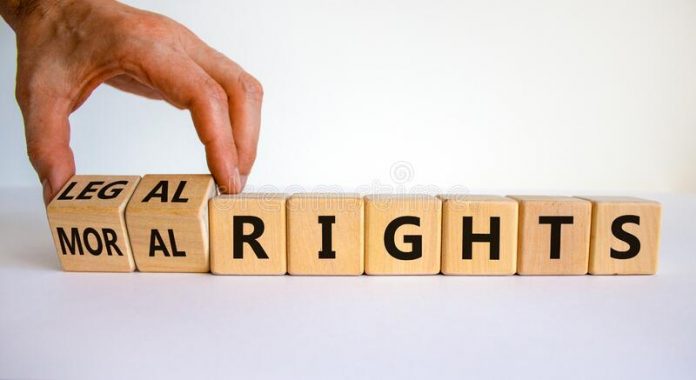This article has been written by Ifra Jan and Karmanye Thadani.
This article has been published by Sneha Mahawar.
Table of Contents
Introduction
“Education is the great engine of personal development. It is through education that the daughter of a peasant can become a doctor, that the son of a mineworker can become the head of the mine, that a child of farm workers can become the president of a great nation. It is what we make out of what we have, not what we are given, that separates one person from another.”
-Nelson Mandela
While the content of social science and literature textbooks makes for political debates, the very access to schooling remains a huge issue for large sections of the Indian masses. Lack of education adversely affects economic development and also gives rise to anti-social elements.
Position in International Human Rights Law
Article 26 of the Universal Declaration of Human Rights (UDHR) states-
“Everyone has the right to education. Education shall be free, at least in the elementary and fundamental stages. Elementary education shall be compulsory. Technical and professional education shall be made generally available and higher education shall be equally accessible to all on the basis of merit.”
While the UDHR, being a declaration, constitutes “soft law” not being as binding, several conventions giving its provisions more teeth, being “hard law” also exist and uphold the right to education.
In the same vein, Article 13 of the International Covenant on Economic, Social and Cultural Rights (ICESCR), its longest provision, and Article 14 uphold this right, especially in primary education.
The Committee on Economic, Social, and Cultural Rights (CESCR) is a body of 18 independent experts that monitors the implementation of the International Covenant on Economic, Social and Cultural Rights by its State parties. In the twenty-first session of the Committee on Economic, Social and Cultural Rights held on 8 December 1999, it upheld this right to be accessible to all, irrespective of income or geography.
Article 10 of the Convention on the Elimination of All Forms of Discrimination Against Women (CEDAW) upholds this right for the female gender and Article 28 of the Convention on the Rights of the Child for children. The constitution of UNESCO expresses the belief of its founders in “full and equal educational opportunities for all”.
The United Nations Millennium Declaration, in Article 19, mandates states to ensure that “children everywhere, boys and girls alike, will be able to complete a full course of primary schooling and that girls and boys will have equal access to all levels of education”.
History of the Right to Education in India
The theme of access to education for the masses resonated throughout the nationalist movement. Mahatma Gandhi made the same demand but dropped it on being told that universal elementary education could be made possible by the colonial government only from liquor proceeds!
After independence, while the Right to Education was sought by some members of the Constituent Assembly to be included as a fundamental right, it was eventually included as a Directive Principle of State Policy, which is of a non-justiceable nature, under Article 45, which reads-
“The State shall endeavour to provide, within a period of ten years from the commencement of this Constitution, for free and compulsory education for all children until they complete the age of fourteen years.”
In 2002, the 86th amendment was introduced, which inserted Article 21A of the constitution-making the Right to Education within the age bracket of 6 to 14 years a fundamental right, though, within the ambit of statutory provisions introduced by the State. Article 45 was also amended, to now read the following-
“The State shall endeavour to provide early childhood care and education for all children until they complete the age of six years.”
Subsequently, in 2009, new legislation, the Right of Children to Free and Compulsory Education Act, popularly known as the Right to Education (RTE) Act was introduced in this regard, which has substantially increased enrolment, but there are serious debates relating to the same.
Debates surrounding the RTE Act and authors’ stand
- 25% Reservation for Economically Backward Children in Private Schools: Is It a Step in the Right Direction?
The authors do believe that it is a positive step, so long as it is honestly implemented and the government bears the costs in its entirety, including that of textbooks, uniforms, etc. Those arguing that economically backward children would suffer from a complex should respect the right of the children and their parents to make their own decisions. Free market economists like Milton Friedman also promoted the idea of education vouchers, i.e. giving economically backward parents monetary support for having their children admitted to private schools. In any case, P12 education is technically not a for-profit business in India (not debating whether it should be), and even if were to become one, when private corporations have to abide by corporate social responsibility norms in India (not debating their desirability), there is no harm in asking schools to educate poor children without bearing any expense.
- No Detention till Class VIII: Was It a Good Idea?
Too many children moved to Class VIII without even remembering their multiplication tables or really grasping the concepts. The rollback of this ridiculous provision was indeed a good initiative according to the authors.
- Extensive Infrastructure-Oriented Recognition Norms Challenging for Low Budget Private Schools.
Extensive infrastructure norms for recognition (rather than focusing on learning outcomes) are leading to low-budget private schools shutting down, while government schools not meeting the norms continue to function with indefinite time to meet the same. Unfortunately, despite economic right-wing intellectuals making appeals to ease the license raj on low budget private schools, suggesting making amendments to the RTE Act, since 2014, no steps have been taken in this direction, though low budget private schools often provide low-cost, relatively good quality education to the poor, even in places with no government schools, and the right to run a school is a fundamental right under Article 19(1)(g) of the constitution as per the Supreme Court in the landmark TMA Pai case.
Yes, the Modi government at the centre has emulated a good practice followed by the Gujarat government when Modi was Chief Minister wherein his government focused on learning outcomes more than infrastructure norms in the state RTE Rules to ease regulations for education entrepreneurs, and now, the centre has amended the RTE Rules making it compulsory for all states to do so, but why can’t all those stifling infrastructure norms only for private schools be considerably eased? The authors believe they must be.
- Exclusion of the Age Group of 0-6 Years from the Act
The formative years of children’s development lie in early childhood care and pre-nursery education, which the authors believe just cannot be conveniently overlooked.
- Exclusion of Minority Schools
Mention must also be made of what the authors believe to be an inappropriate Supreme Court verdict which exempted only unaided minority schools from the 25% quota for the economically backward, but that was a judgment against the then Congress-led UPA government, which, despite being accused of appeasing minorities, did not, at least in this case, seek any such exemption.
Even after the verdict, then Union HRD Minister Kapil Sibal had actually requested minority schools to abide by the quota, despite having not being required to do so by the Supreme Court. Indeed, economically backward children, including from minority communities themselves, should have access to education in good quality minority schools as well, nor should regular schools not under any religious banner have to meet more regulations.
- The regulatory body for the Act being a toothless tiger
The RTE Act has placed its monitoring on the National Commission for Protection of Child Rights (NCPCR) and its counterparts in the states, the State Commissions for the Protection of Child Rights (SCPCRs), constituted under the Commissions for the Protection of Child Rights Act, 2005. Its objective is to safeguard child rights (their mandate includes a host of issues like child labour, children on railway platforms, children in juvenile justice homes, health concerns of children, children in reality shows, etc.), the responsibility of monitoring the Right to Education Act, giving it the same powers in this regard as it has under the same statute under which it has been constituted. These powers amount to conducting investigations and forwarding the matter to the concerned executive or judicial authorities as also carrying out academic surveys concerning child rights. Its powers also encompass receiving complaints of child rights violations (and in this context, any violation of the RTE Act) or taking suo moto cognizance of them and making policy recommendations as to statutory modifications in this field. It may also organize public hearings at the request of some voluntary organisation and only when the concerned executive departments have failed to take up due action, but the result of such hearings can evidently be challenged in a court of law. However, the NCPCR cannot castigate any bureaucrat for incompetence in complying with the directives.
The NCPCR received 2,850 complaints regarding the RTE Act as was revealed under a query as of March 2012. However, it has been able to resolve just 692 cases, or just 24% of the entire lot, by now. From 1st April 2010 to 31st March 2011, the NCPCR resolved only about 54% of the cases, and from 1st April 2011 to 16th March 2012, only about 6%!
Mr. Umesh Gupta, who filed the RTI application and with whom the authors had the fortune of interacting with in person, was quoted in a news report as saying — “Not only is the data shocking, but the numbers actually denote the lowering efficacy of the NCPCR in monitoring the proper implementation of the RTE Act over the two years.”
As per a staff member of the NCPCR who was interviewed by one of the authors in person in August 2012, an estimated 60-70% of the grievances related to government schools failing to meet infrastructure norms laid down under the RTE Act or there being no school in a certain area (though when the same author met Mr. Umesh Gupta later, he denied this, saying that most complaints are admission-related), and getting these problems solved clearly takes time, ranging across a few months, and the work of having these schools built or infrastructure norms met in existing schools is not carried out by the NCPCR itself but other education-related government bodies. While low-budget private schools need more liberty from the red tape, government schools (essential in a developing country like ours) need more answerability, which can’t come if the regulatory body is a toothless tiger.
An interview of a former NCPCR insider who got featured in the magazine ‘Governance Now’ in 2013 still demonstrated problems in the RTE division of the NCPCR even if the figures revealed by Mr. Umesh Gupta’s RTI query in 2012 might have improved. Strengthening the NCPCR should concern the present government as it is willing to rejuvenate the RTE Act, not only in the context of education but even other child rights issues, which would require synchronization between the Ministry of Women and Child Development and the HRD Ministry.
In the context of admission-related complaints in government schools, sometimes the bureaucrats in the concerned government bodies (such as in the context of Delhi, the Directorate of Education, Delhi, and the Municipal Corporation of Delhi) don’t give timely responses to the NCPCR. He stated that the NCPCR had requested for inquiries to be instituted against those incompetent bureaucrats by the concerned departments. However, the NCPCR is incapable of taking action against them.
In conclusion, the NCPCR as a body (and this also equally applies to the SCPCRs) can have significant efficiency only if it has more authority to implement its decisions and reprimand government officers for non-compliance by way of fines and by having that non-compliance included in their reports to be considered for their promotions. The Central Information Commission (CIC) has that power with reference to monitoring the RTI Act, and the CIC has played a significant role in taking on all political parties on the issue of black money. Till the NCPCR is given such authority, it sadly just remains a toothless tiger!
With these bottlenecks removed, the RTE Act can be an even more effective instrument for empowering our future generations!
*She is a spokesperson of the Jammu and Kashmir National Conference.
**He is the president of the Citizens’ Foundation for Policy Solutions (CFPS), a Delhi-based public policy think-tank.
The views expressed in this article are in their personal capacities.
References
- https://www.right-to-education.org/page/international-law
- https://www.refworld.org/pdfid/4538838c22.pdf
- https://unesdoc.unesco.org/ark:/48223/pf0000212715
- https://www.un.org/en/development/devagenda/education.shtml
- https://punarbhava.in/index.php/legal-instruments/international-instruments/unesco/dakar-framework-for-action
- https://sustainabledevelopment.un.org/content/documents/1681Dakar%20Framework%20for%20Action.pdf
- https://www.constitutionofindia.net/blogs/education__2__assembly_s_advisory_committee_dispatched_education_from_fundamental_rights_to_directive_principles
- https://www.orfonline.org/research/ten-years-of-rte-act-revisiting-achievements-and-examining-gaps-54066/
Students of Lawsikho courses regularly produce writing assignments and work on practical exercises as a part of their coursework and develop themselves in real-life practical skills.
LawSikho has created a telegram group for exchanging legal knowledge, referrals, and various opportunities. You can click on this link and join:
Follow us on Instagram and subscribe to our YouTube channel for more amazing legal content.













